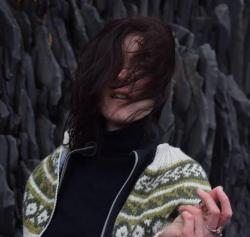
A second mass whale stranding in three weeks occurred Friday on Southwest Iceland’s Reykjanes peninsula. The stranding happened on the rocky coast of Garður, the northernmost town of the peninsula, after 50 to 70 pilot whales were spotted close to shore near high tide.
One of the first responders on the scene at 19:00, police officer Hjálmar Hallgrímsson said there was an attempt to push the whales out to sea. “As soon as high tide hit [at 19:30],” Hjálmar told The Grapevine, “they all just sailed right onto shore.”
More than 50 whales were stranded close to the breakwall. Police were joined by Björgunarsveit, Iceland’s volunteer Search and Rescue Team. Whale rescue was ongoing throughout the night, with 30 whales successfully rescued and returned to sea before 8:00 Saturday morning.

Rescue mission
The whales were stranded on a rocky shoreline, a distance from the ocean when the tide was low. Many whales sustained injuries when they scraped across the rocky shore. At the scene, the whales could be heard breathing and occasionally thrashing tails or fins when sprayed with water by the rescue team.
Approaching low tide at 1:48 Saturday morning, the rescue team worked hard to keep the whales wet. Whales were covered with damp blankets or seaweed. Each rescue worker had one to three whales in their care, either spraying them with ocean water pumped through a hose or carrying buckets of water from nearby tidal pools.
Rescue team members were required to wear full protective suits, with a breathing mask and eyewear. These precautions were taken due to an unconfirmed eye-witness account that a visiting scientist identified some of the whales were carrying an infectious disease of the lungs and eyes, which could be transmitted to humans in close proximity.
The rescue team worked throughout the night. At the high tide of 7:30am, 30 of the 50 whales were able to swim back into the ocean. Given pilot whales’ herd behaviour, there is concern that the rescued whales could strand again while waiting for remaining beached whales. Authorities report that the remaining stranded whales will likely die.
The Reykjavík Grapevine was on the scene at low tide and again before high tide. While the rescue mission was accessible at low tide, the site was cordoned off prior to 6am with no access to journalists. Surveying the area, the Grapevine noted that several whales had stranded to the west of the rescue site.
Abundant difficulties
This is Iceland’s third largest mass stranding of the past 40 years, two of which have occurred in the past month. The largest mass stranding occurred in 1986, when 148 pilot whales died at Þorlákshöfn. Last month, 53 pilot whales stranded and died on the remote island of Gamlaeyri on the Snæfellsnes peninsula.
Pilot whale occurrence has increased in the shallow coastal waters off West Iceland over the last few years. Pilot whales travel in herds, led by a matriarch. If the lead whale navigates to shallow water hunting prey or due to illness, the herd will follow. There are many hypotheses for pilot whale strandings in Iceland, including anthropogenic factors like Persistent Organic Pollutants as well as increased mackerel abundance (a food source).
Tides are at their most extreme ebbs and floods during full and new moons, and this contributes to pilot whales’ difficulty navigating in shallow waters. The Snæfellsnes stranding of July 16th occurred on the full moon. Friday’s Reykjanes stranding happened just after the new moon.



















Buy subscriptions, t-shirts and more from our shop right here!
















